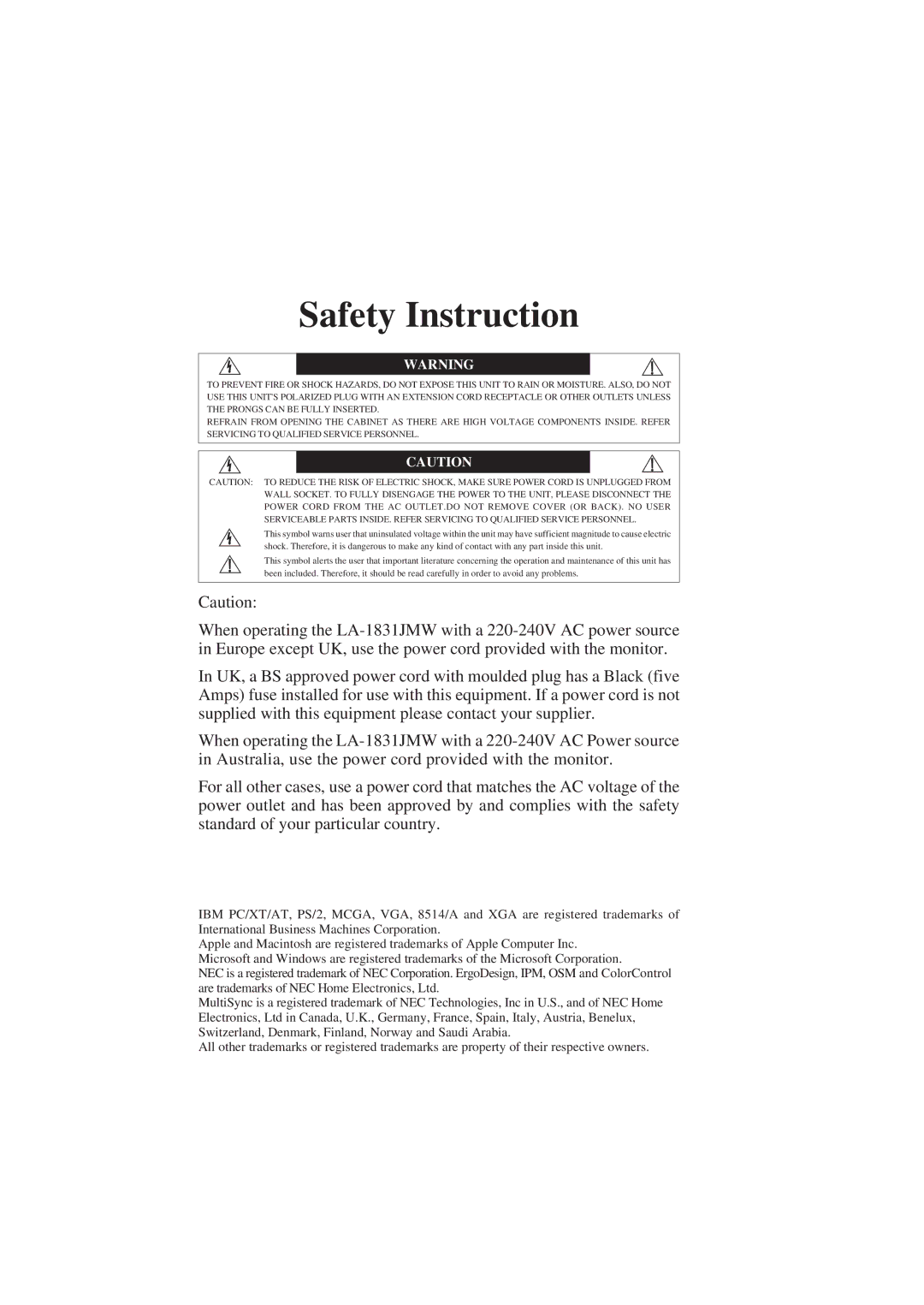1810 specifications
The NEC 1810, an innovative microprocessor introduced in the early 1980s, was pivotal in the evolution of computing technology. As the first 16-bit microprocessor in the NEC lineup, it incorporated several advanced features that set it apart from its contemporaries. Designed primarily for embedded systems, the NEC 1810 provided a rich set of functionalities that appealed to a wide range of applications, from consumer electronics to industrial automation.One of the standout characteristics of the NEC 1810 was its architecture, which boasted a 16-bit data bus and 18-bit address bus. This allowed the processor to access a significant amount of memory, up to 256 KB, enabling developers to create more sophisticated programs than what was possible with 8-bit processors of the time. The ability to handle larger data types also enhanced the execution speed and efficiency, making the NEC 1810 a powerful choice for developers.
The microprocessor was built using CMOS technology, which contributed to its low power consumption and high noise immunity. This was particularly important for battery-operated devices, as it allowed for longer operational periods without the need for frequent recharging. The chip operated at a clock speed of up to 6 MHz, which, while modest by today's standards, was competitive during its heyday.
Another noteworthy feature of the NEC 1810 was its instruction set architecture. The microprocessor supported a variety of addressing modes and offered up to 78 different instructions, including arithmetic and logic operations, data manipulation, and control flow commands. This versatility made it suitable for a wide array of application domains.
The NEC 1810 also integrated several built-in hardware components that simplified the design of peripheral interfaces. This included timers, programmable I/O ports, and even interrupt handling capabilities, allowing developers to create responsive applications without needing extensive external circuitry.
As a member of a growing family of microprocessors, the NEC 1810 played a significant role in the proliferation of personal computers and programmable devices in the 80s. Its combination of efficiency, power, and flexibility made it a favored choice among engineers and designers seeking to push the boundaries of technology. Today, while far surpassed by modern processors, the NEC 1810 remains a noteworthy milestone in the history of microprocessor design, representing an era defined by rapid advancements in computing capabilities.

